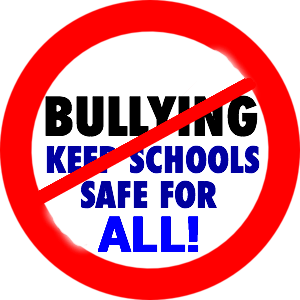 The following is a guest post by Dr. Kenneth Shore. He is a child and family therapist, school psychologist and author. His NPR, Inc. publications include the book The ABCs of Bullying Prevention and the laminated reference guides, An Educator’s Guide to Bullying Prevention; Classroom Management: A Guide for Elementary Teachers; A Teacher’s Guide to Working With Parents; and A Parent’s Guide to Working With Teachers. He is working on a new laminated guide for educators on the topic of addressing bullying of students with disabilities.
The following is a guest post by Dr. Kenneth Shore. He is a child and family therapist, school psychologist and author. His NPR, Inc. publications include the book The ABCs of Bullying Prevention and the laminated reference guides, An Educator’s Guide to Bullying Prevention; Classroom Management: A Guide for Elementary Teachers; A Teacher’s Guide to Working With Parents; and A Parent’s Guide to Working With Teachers. He is working on a new laminated guide for educators on the topic of addressing bullying of students with disabilities.
His website is http://drkennethshore.nprinc.com/.
How to Protect Students with Disabilities from Bullying Using the IEP
Students with special needs are at high risk for being bullied. Studies have consistently found that children with disabilities are two to three times more likely to be bullied than children who are not disabled. Moreover, their physical, intellectual, emotional or learning disabilities may impede their ability to respond effectively to the bullying. As a result, schools must be especially attentive to the bullying of special education students.
School staff have various resources they can use to lessen the likelihood of bullying. The Individualized Education Program (IEP) is an especially useful tool for responding to the bullying of a student with special needs.
The IEP is a document that is required by federal law to be developed and implemented for all special education students. It describes in detail a program of individualized instruction, services and supports for students with disabilities. Developed by school staff and parents, the IEP is intended to address academic, behavioral and social concerns. Because bullying can affect the child’s academic performance and social adjustment, it is an issue that schools should address in the IEP of a student who is being bullied.
If you are looking to address a bullying concern by building some safeguards into the IEP, the following questions may help you determine what to include in this document:
- Do staff need to be assigned to monitor the student in areas of the school where he is especially at risk of being bullied?
- Which staff members need to be informed of the bullying situation so they can monitor and prevent its occurrence?
- Do any staff members involved with the student require training in bullying prevention?
- What goals and objectives are appropriate for the school staff to work on as a way of enhancing the child’s social and assertiveness skills?
- Does the student need any related services such as counseling to give him skills for dealing with the bullying?
- Might the student be considered for a social skills group in school to help improve his ability to interact with peers?
- Would the student benefit from any services outside of school (for example, counseling with an outside agency) to help him deal with the bullying?
- What classroom accommodations and modifications are needed to help lessen the likelihood of the student’s bullying? For example,
- What strategies can school staff use to promote the child’s social skills and self-advocacy ability?
- What strategies can be implemented in the school to help the student become more integrated with and accepted by his classmates?
- What steps can parents take to support their child relating to the bullying?
- What arrangements can be made for school staff and parents to communicate on a regular basis regarding the bullying?
The IEP describes a program that the school is legally required to implement. In this way, including bullying prevention safeguards in the IEP gives the IEP development team—made up of the parent, a regular-education teacher, the special-education teacher, the case manager and, where appropriate, the student—considerable power and leverage in dealing with the bullying situation. The IEP meeting might, in addition, include other school staff who are in a position to deal with the bullying, such as a physical education teacher or a playground aide. Similarly, the student might also be invited to this meeting. The older the student, the more likely he will be able to contribute meaningfully to the development of anti-bullying practices.
In this way, addressing bullying in a student’s IEP builds in a system for the key people in the child’s school life to meet and agree on a set of practices to prevent bullying incidents.










